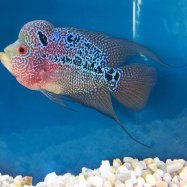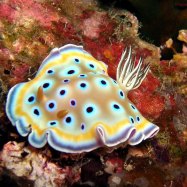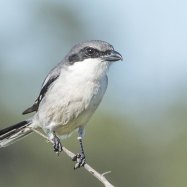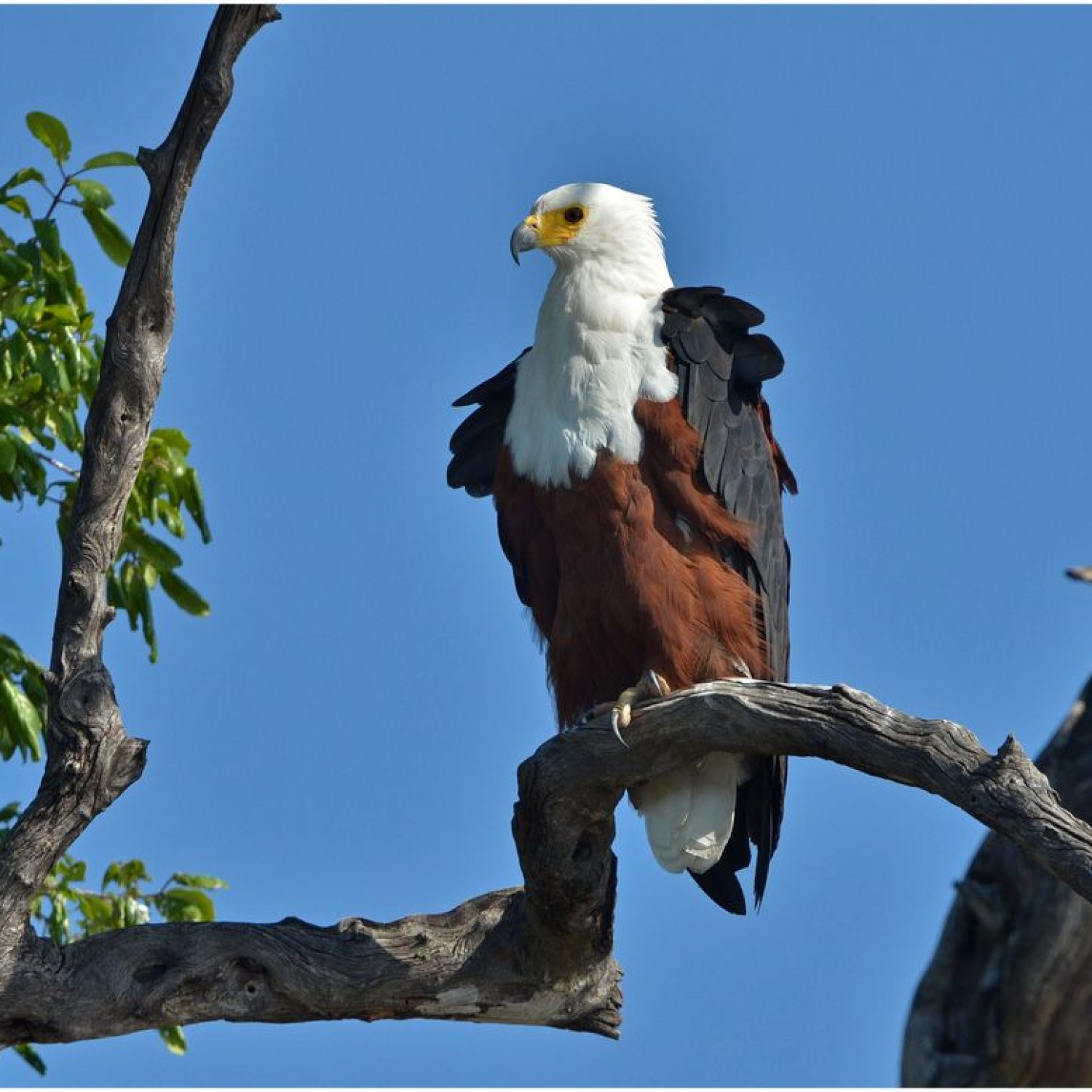
African Fish Eagle
63-75 cm
Meet the majestic African Fish Eagle, a large and stocky bird found near water bodies in Africa. With a length of 63-75 cm, this bird belongs to the Accipitridae family and is known for its impressive hunting skills and iconic call. Keep an eye out for this beautiful creature on your next safari adventure! #AfricanFishEagle #Africa #BirdWatching #Accipitridae
Animal Details Summary:
Common Name: African Fish Eagle
Kingdom: Animalia
Habitat: Freshwater lakes, rivers, and wetlands
The Mighty Hunter of African Waters: The African Fish Eagle
The African continent is known for its unique and diverse wildlife, from the majestic lions and elephants to the graceful giraffes and zebras. But among the many animals that call Africa home, there is one that stands out for its impressive hunting skills and striking appearance – the African Fish Eagle.Royal Origins
The African Fish Eagle, scientifically known as Haliaeetus vocifer, is a large bird of prey belonging to the Accipitridae family. It is a member of the genus Haliaeetus, which also includes other iconic eagle species such as the Bald Eagle and the White-tailed Eagle African Fish Eagle.While the African Fish Eagle may be the most well-known and widespread eagle in Africa, it is not the only one. It has two close relatives – the Madagascar Fish Eagle and the Pallas's Fish Eagle, both found in Madagascar and Asia respectively. However, the African Fish Eagle's range is much larger, covering most of sub-Saharan Africa.
Appearance and Adaptations
The African Fish Eagle's appearance is one of its most striking features. It has a distinctive brown body with a white head and tail, making it easily recognizable. This coloration is not only beautiful but also serves as camouflage while hunting, blending in with the surrounding waters.The eagle's large, stocky body and powerful, hooked beak make it a formidable predator. Its wingspan ranges from 177 to 210 cm, with a length of 63 to 75 cm. This wingspan is essential for hunting, as the eagle needs to be able to glide and swoop down on its prey with precision Arapaima.
But perhaps the most impressive adaptation of the African Fish Eagle is its reversible toes. Like many other birds of prey, the African Fish Eagle has talons on its toes to catch and grasp its prey. But what sets it apart is that it can rotate its outer toe forward or backward, depending on the direction of its flight. This adaptation allows the eagle to have a better grip on its target while flying, making it a highly efficient hunter.
Habitat and Distribution
The African Fish Eagle is primarily found near freshwater lakes, rivers, and wetlands throughout sub-Saharan Africa. These water bodies are its natural habitat, providing an abundance of food and shelter for the eagles.Thanks to its widespread distribution, the African Fish Eagle can be found in various countries in Africa, including South Africa, Kenya, Tanzania, and Senegal, to name a few. It is also a resident bird, meaning it does not migrate and stays in its home range throughout the year.
However, this magnificent eagle is facing several threats, including habitat loss and human disturbance. As wetlands are drained or polluted, the eagle's hunting grounds and nesting sites are also affected. Additionally, human activities such as fishing and recreational water sports can disturb the birds, affecting their natural behavior and survival.
Feeding Behavior
As its name suggests, the African Fish Eagle's diet primarily consists of fish. It is a fish-eating bird of prey, also known as an osprey, or piscivorous. Its diet includes various types of fish, depending on what is available in its habitat. Some of its favorite prey includes catfish, lungfish, and tilapia.But the African Fish Eagle is not a picky eater and will also feed on other animals. It is a carnivorous bird, and its diet can include birds, reptiles, and even mammals, such as monkeys and small antelopes. This flexibility in its diet allows the eagle to adapt to changes in its environment and ensure its survival.
Majestic Hunter
Watching the African Fish Eagle hunt is an impressive sight to behold. It is a patient and skilled hunter, often perching on a high point near the water and patiently monitoring the surroundings for potential prey.Once it spots a target, the eagle will take off and soar above the water, using its keen eyesight to locate the fish beneath the surface. When it spots a suitable catch, it will dive down, often at high speed, and snatch the fish with its sharp talons. The prey can be lifted out of the water, and the eagle will fly back to its perch to feast on its meal.
This hunting technique, known as "plucking," is common among many eagles and other birds of prey. But the African Fish Eagle's hunting prowess and remarkable agility make it one of the most skilled avian hunters.
Cultural Significance
The African Fish Eagle has been called the "voice of Africa" due to its distinctive call, often described as a loud, ringing, and unmistakable "kwheee-uw" sound. This call has not only earned the eagle its scientific name "vocifer," which means "loud-voiced," but also its place in African culture.In several African countries, the call of the African Fish Eagle is considered a symbol of prosperity, freedom, and strength. It is often depicted in traditional art and literature and has been featured on national emblems and flags, such as Zambia and South Sudan.
Additionally, the African Fish Eagle's impressive hunting skills and noble appearance have made it a popular subject for wildlife photographers and filmmakers. Its presence in African landscapes and water bodies further reinforces its cultural significance and iconic status in the continent.
Conservation Efforts
Like many other species of birds of prey, the African Fish Eagle faces various threats to its survival. These include habitat destruction, accidental poisoning, egg collecting, and persecution by humans. Climate change is also a significant concern as changing weather patterns can affect the eagle's nesting sites and food sources.In recognition of these threats, the African Fish Eagle is listed as a species of "Least Concern" on the International Union for the Conservation of Nature (IUCN) Red List. However, conservation efforts are still essential to ensure the long-term survival of these majestic birds.
Some of the conservation efforts being undertaken include habitat protection and restoration, research and monitoring, and educational programs to raise awareness. Several countries in Africa have also implemented laws to protect the eagle, including strict regulations on hunting and trade.
The Spirit of the African Waters
The African Fish Eagle is not just a magnificent bird; it is also a symbol of the rich and diverse wildlife found in the African continent. Its impressive hunting skills, striking appearance, and cultural significance make it an emblem of strength, freedom, and prosperity.But beyond its symbolic value, the African Fish Eagle also plays a crucial role in its ecosystem. As a predator, it helps maintain the balance of fish populations in its habitat, ensuring the health of the waters it calls home.
As we continue to strive for a sustainable future, it is essential to protect and preserve the African Fish Eagle and its habitat. This mighty hunter and voice of Africa must continue to soar in the skies, reminding us of the beauty and wonder of the natural world.

African Fish Eagle
Animal Details African Fish Eagle - Scientific Name: Haliaeetus vocifer
- Category: Animals A
- Scientific Name: Haliaeetus vocifer
- Common Name: African Fish Eagle
- Kingdom: Animalia
- Phylum: Chordata
- Class: Aves
- Order: Accipitriformes
- Family: Accipitridae
- Habitat: Freshwater lakes, rivers, and wetlands
- Feeding Method: Carnivorous
- Geographical Distribution: Sub-Saharan Africa
- Country of Origin: Various countries in Africa
- Location: Water bodies in Africa
- Animal Coloration: Brown body with white head and tail
- Body Shape: Large, stocky
- Length: 63-75 cm
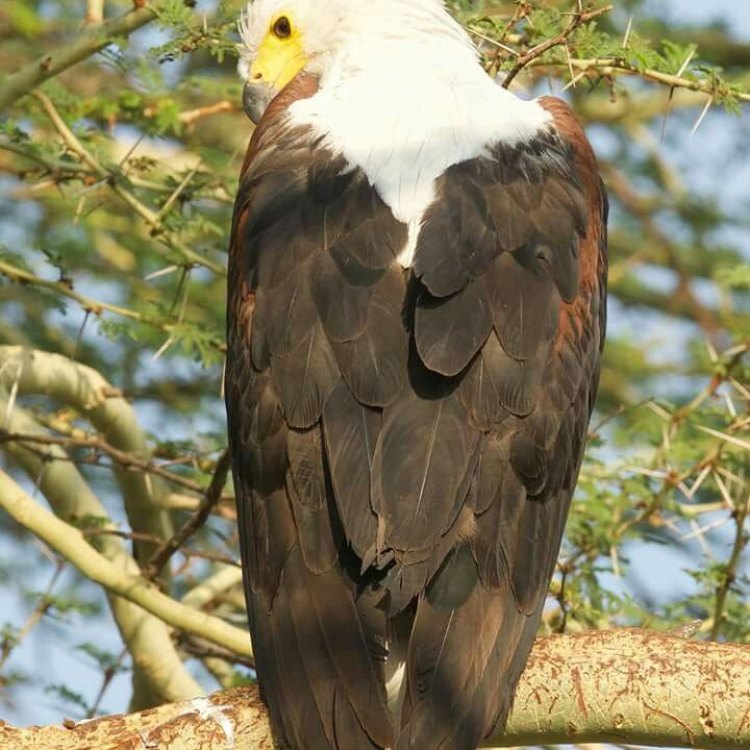
African Fish Eagle
- Adult Size: Wingspan of 180-235 cm, weight of 2.5-3.2 kg
- Average Lifespan: Up to 24 years
- Reproduction: Sexual
- Reproductive Behavior: Monogamous
- Sound or Call: Distinctive, loud, high-pitched call
- Migration Pattern: Partial migrant
- Social Groups: Solitary or in pairs
- Behavior: Primarily diurnal
- Threats: Habitat loss, pollution, human disturbance
- Conservation Status: Least Concern
- Impact on Ecosystem: Top predator in its habitat
- Human Use: Symbol of several African countries
- Distinctive Features: White head and tail, hooked beak, powerful talons
- Interesting Facts: Known for its fishing skills
- Predator: No natural predators
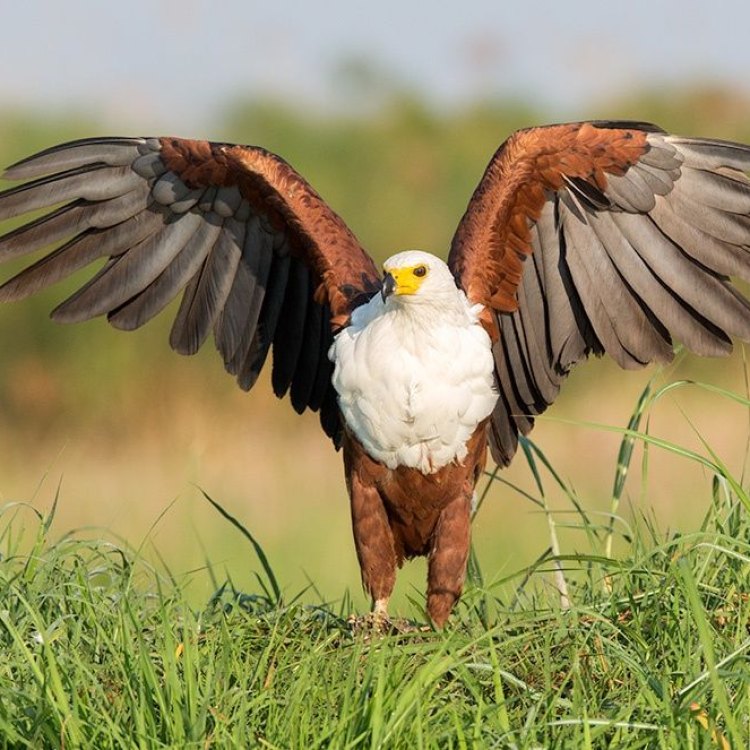
Haliaeetus vocifer
The Mighty African Fish Eagle: A Symbol of African Wildlife
The vast and diverse continent of Africa is home to a plethora of unique and fascinating creatures. Among them, the African Fish Eagle stands tall as a symbol of strength, resilience, and beauty. With its distinctive features and impressive abilities, this iconic bird has captured the hearts and minds of people across the world. In this article, we will delve into the world of the African Fish Eagle and discover what makes it one of the most captivating birds in the animal kingdom PeaceOfAnimals.Com.Size and Reproduction
The African Fish Eagle is a large bird of prey, with an impressive wingspan of 180-235 cm and a weight of 2.5-3.2 kg. As one of the largest species of eagles in Africa, it is a formidable predator that strikes fear into its prey. But despite its size, the African Fish Eagle mates for life and is known for its monogamous reproductive behavior. During the breeding season, these magnificent birds form strong pair bonds, and the male and female work together to build a large nest made of sticks and branches.Lifespan and Behavior
The average lifespan of an African Fish Eagle is up to 24 years, but some individuals have been known to live even longer in captivity. These birds are primarily diurnal, meaning they are most active during the daytime. They are also partial migrants, meaning that they may move to different areas within their range depending on the availability of food and suitable breeding sites Arizona Bark Scorpion. You may be lucky enough to spot one of these majestic birds perched high atop a tree or soaring through the sky during the day.Distinctive Features and Call
One of the most striking features of the African Fish Eagle is its white head and tail, which contrasts beautifully with its dark brown body. Its hooked beak and powerful talons are adapted for hunting and grasping prey with ease. But perhaps the most distinctive characteristic of this eagle is its loud and high-pitched call, which is often described as a musical scream. This call is not only used for communication between pairs but also serves as a territorial call to defend their breeding territory.Majestic Fishing Skills
As the name suggests, the African Fish Eagle is well-known for its fishing skills. It is often seen perched on a tree near bodies of water, patiently waiting for its prey to come to the surface. Once it spots a fish, it swoops down and snatches it out of the water with its sharp talons. This impressive hunting technique has earned it the nickname "the fishing eagle" and has become one of its most defining features.Top Predator in its Habitat
The African Fish Eagle has a significant impact on its ecosystem as a top predator. By preying on fish, it helps balance the population of fish in the waterways, preventing overpopulation. In some areas, these eagles also feed on small mammals, reptiles, and even other birds, helping maintain a healthy balance in the food chain. This bird plays a vital role in its habitat and is considered a keystone species, meaning that its presence is essential for the survival of other species in its ecosystem.Threats and Conservation Status
Despite its prominent role in the ecosystem, the African Fish Eagle faces numerous threats. These include habitat loss, pollution, and human disturbance. Large-scale construction projects and deforestation have resulted in the destruction and fragmentation of their natural habitat. Pollution from pesticides and other chemicals can also affect their health and reproductive success. Additionally, human disturbance, including hunting and the use of lead ammunition, can be fatal for these birds.But despite these threats, the African Fish Eagle is currently listed as Least Concern on the IUCN Red List. This is due to its large range and high population numbers. However, conservation efforts are still crucial to ensure the continuity of its population and the protection of its habitat.
Human Use and Cultural Significance
The African Fish Eagle has not only captured the attention of wildlife enthusiasts but has also become a significant symbol in African culture. It is the national bird of Namibia, Zimbabwe, and Zambia, representing strength, courage, and freedom. Its impressive hunting skills and majestic appearance have also earned it a place on numerous coins, flags, and emblems throughout Africa. But beyond its cultural significance, the African Fish Eagle serves as a reminder of the importance of protecting our natural world and the magnificent creatures that call it home.No Natural Predators
While the African Fish Eagle may face threats from human activities, it is fortunate to have no natural predators. With its large size and powerful hunting skills, it is not an easy target for other wildlife. However, young eagles may sometimes fall prey to larger predators such as crocodiles or other birds of prey. But once they reach adulthood, they are not easily threatened by other animals in their habitat.In Conclusion
As one of the most recognizable and iconic birds in Africa, the African Fish Eagle represents the wild and untamed spirit of the continent. With its distinctive features, impressive abilities, and cultural significance, it has become a symbol of African wildlife. However, with increasing threats to its habitat and survival, it is crucial that we continue to protect and conserve this majestic bird for future generations to admire and appreciate. So the next time you spot an African Fish Eagle soaring through the sky, take a moment to marvel at its beauty and think about the role it plays in its ecosystem and our world.
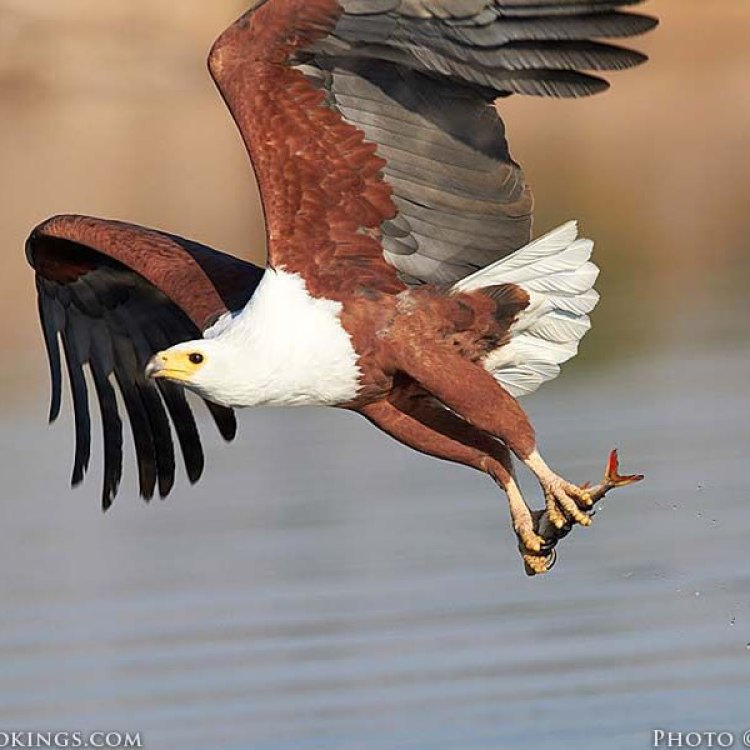
The Mighty Hunter of African Waters: The African Fish Eagle
Disclaimer: The content provided is for informational purposes only. We cannot guarantee the accuracy of the information on this page 100%. All information provided here may change without prior notice.





